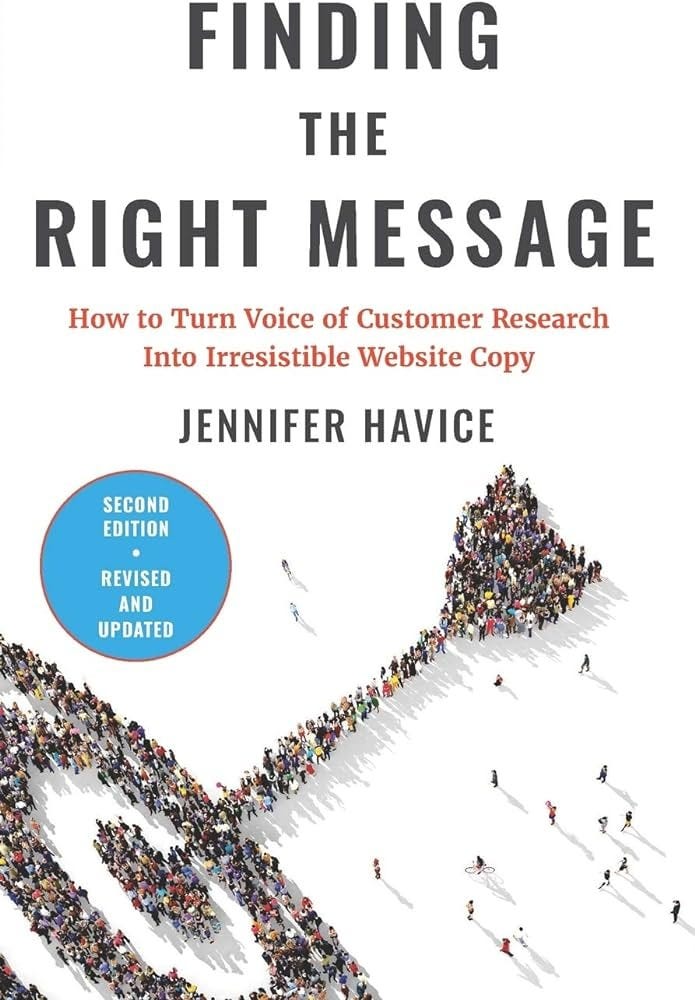Five ways to find out what your climate tech customers are looking for
A deep dive into how to speak the language of your buyers.
Hello friends,
Last week we talked about the importance of crafting a brand message that actually appeals to buyers. Sounds obvious, but it’s not easy.
Message-market fit is a moving target — especially in the climate sector. Resonating with buyers means continually evolving and refining your message to meet your audience’s shifting attention.
So how can climate tech marketers inform their messaging so that it continues to reflect the needs and desires of their customers?
We believe the quality of your output begins with the quality of your input.
And that’s why we begin our projects with a voice-of-customer program.
Implementing a voice-of-customer (VoC) program
‘Voice of customer’ is a research method for collecting customer feedback and insight.
By gathering data about how your customers are thinking and speaking about your product, their jobs to be done, and the pains they’re experiencing, you can better position your brand as the answer to their problems.
The trick is in capturing not just the big picture but also the unique, “sticky” language (memorable, succinct, vivid) consumers use to talk about their day-to-day experiences.
You can then turn around and reflect that language back to them — effectively joining the conversation in their head and making them feel seen and understood.
5 methodologies for collecting VoC data for climate tech
1:1 customer interviews
Interviews are, hands down, the best way to collect VoC data. Ideally, this is a face-to-face conversation, either in person or via video call. But a simple phone call will also do the trick.
You’ll want to come ready with pre-prepared questions, but the real magic happens in the follow-up. Most people will need a bit of prodding to provide answers that go beyond the “This is what I think you want to hear” variety.
Online surveys
A well-designed survey can be an efficient tool for collecting the data you need to inform your messaging. We like surveys because you can send them to everyone on your email list, and hopefully, receive enough feedback to identify trends and patterns in the responses.
Recorded call data
For climate tech companies, making a sale isn’t as simple as clicking “Buy now!” Instead, most selling happens over several conversations.
We cannot stress this enough. Recording (and reviewing!) your sales calls and demos is a massively underutilized activity. Studying these recordings will provide you with a goldmine of data. What questions are asked? At what points is attention lost? When do prospects lean in to hear more?
These calls are also a great opportunity to test new messaging concepts to see if they land.
Forums
Reviewing relevant forums (think Reddit, Quora, even LinkedIn) is a great way to scope out the unfiltered questions and thoughts your target audience is has about products like yours. It’s also a great way to sniff out broader public opinion, positive or otherwise, which can help you formulate a strategy for meeting objections head-on.
Reviews
While review mining will be less relevant for those of you working with hardware and first-of-a-kind (FOAK) technologies, for those of you in software, reviews can be a treasure trove of insight.
Sites like G2, Software Advice, and Capterra are great places to collect VoC data because they prompt users to talk about both pros and cons. And, because users aren’t speaking to someone affiliated with your company, they’re more likely to be open and honest.
Implementing a VoC program will help you discover what’s most important to your customers so you can align your messaging accordingly.
The takeaway?
VoC is a methodical approach, but also a commitment to actively listen and adapt — a willingness to respond to feedback in real time.
And that means…
Climate tech marketers can use VoC data to craft hyper-specific messaging that goes beyond surface-level pains and gains.
The challenge ahead:
This is not a one-off task, but rather a continuous cycle of learning and refining.
And don’t lose that data — you’ll want access to the “sticky” language your customers use as you move beyond your big-picture messaging strategy to create specific content assets and marketing messages.
Educational resources
“Truly powerful marketing is grounded in generosity, empathy, and emotional labor.” Yep — and these are exactly the qualities you’ll need to implement a successful VoC program.
Your go-to guide for creating better copy with voice-of-the-customer research. This book is specific to crafting website copy, but we think you’ll find the insights here invaluable for informing the messaging across all your marketing assets.




